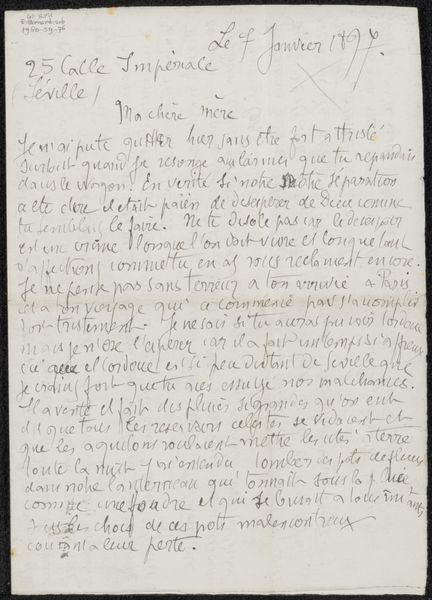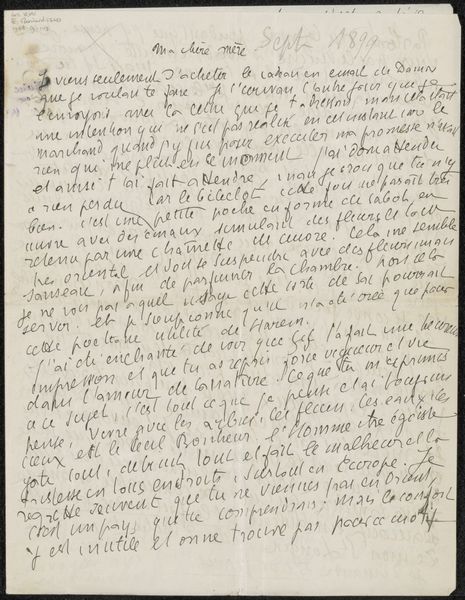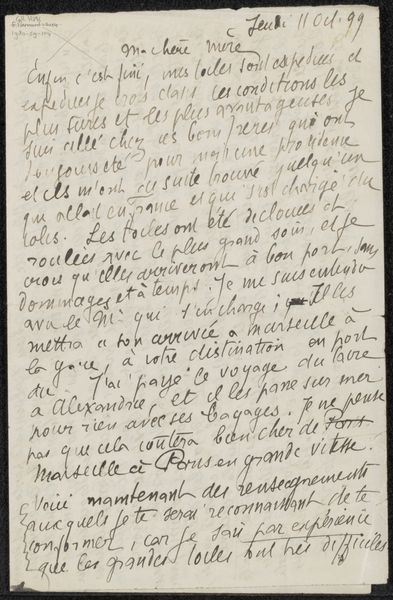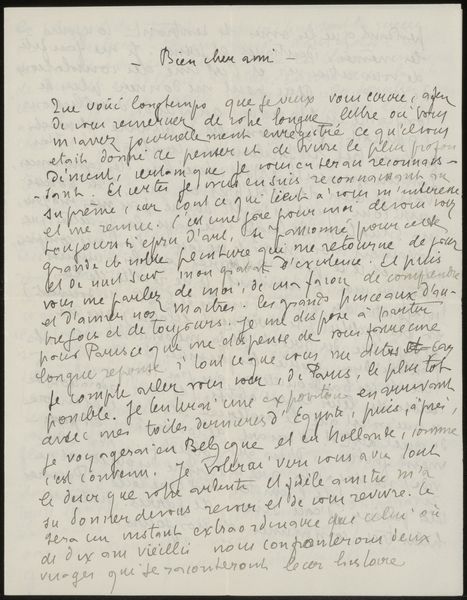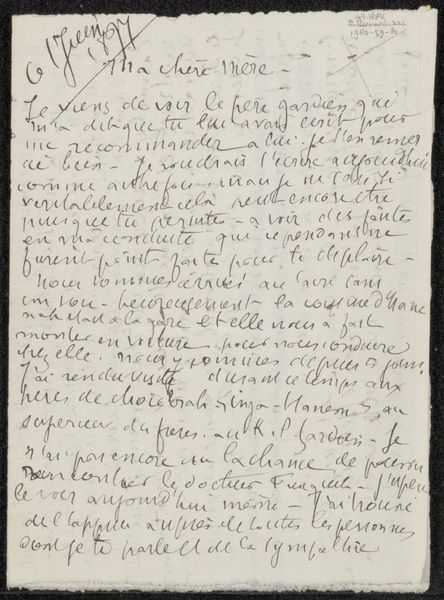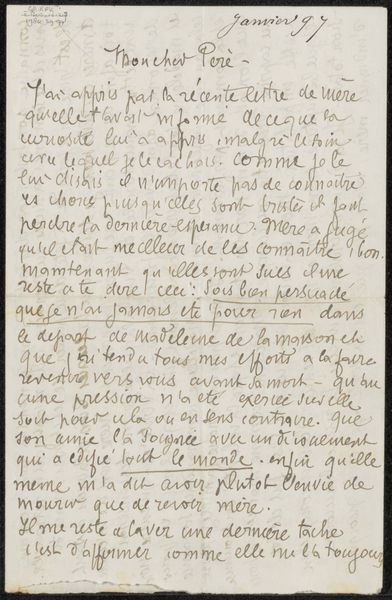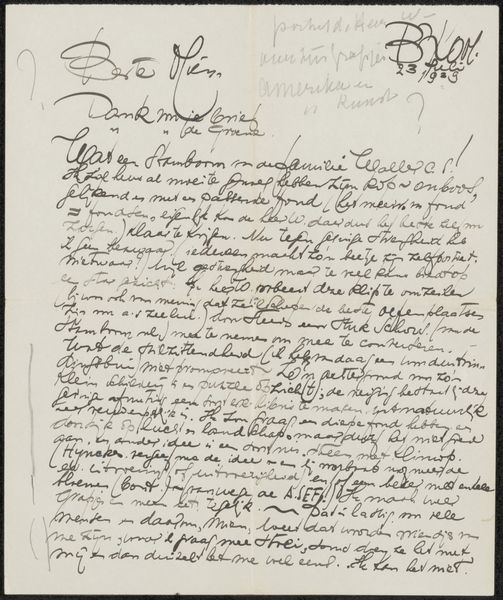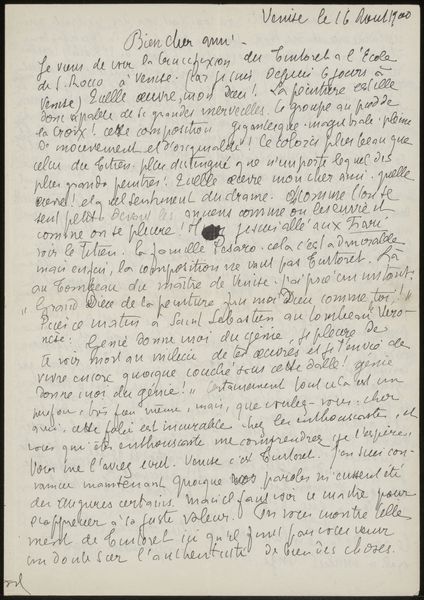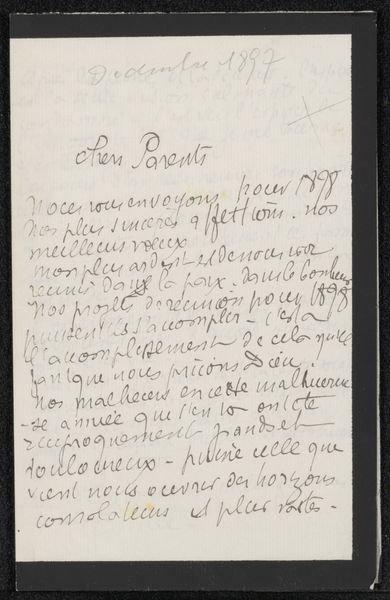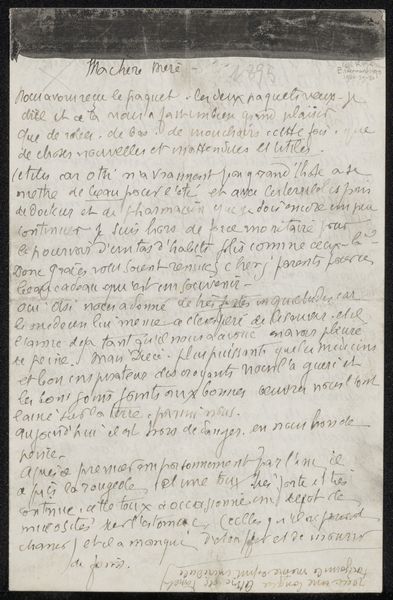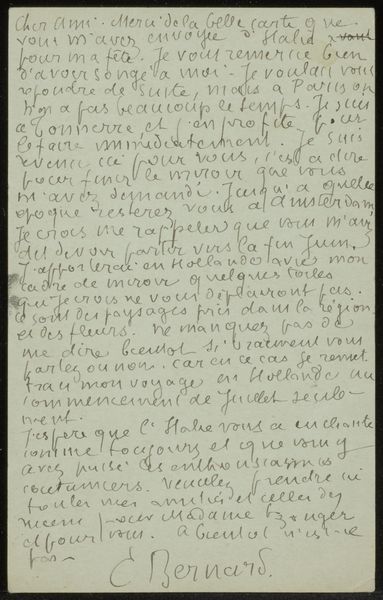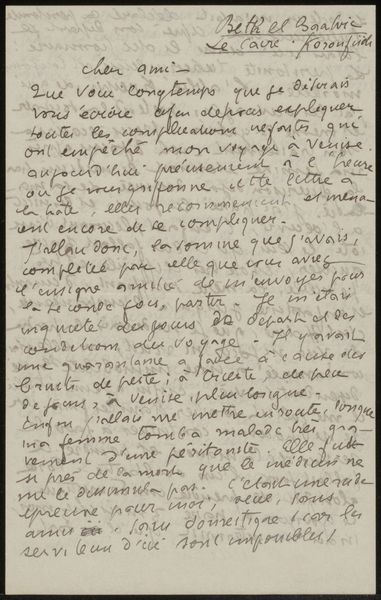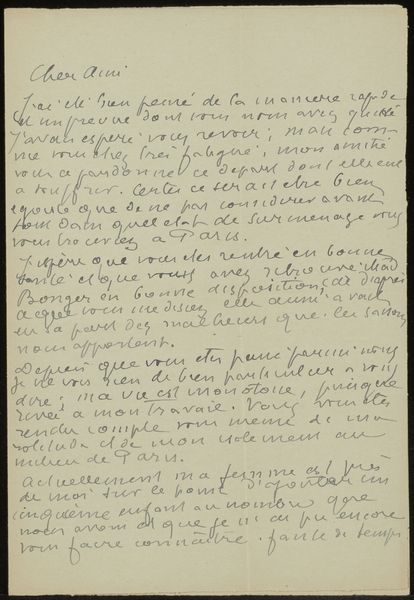
drawing, paper, ink
#
drawing
#
paper
#
ink
#
intimism
#
post-impressionism
Copyright: Rijks Museum: Open Domain
Curator: Today, we're looking at "Brief aan Héloïse Bernard-Bodin," a drawing by Émile Bernard, possibly from 1897 to 1899. It's an ink drawing on paper. Editor: My first impression? It’s… dense. The tight, looping script almost entirely fills the page. There’s a nervous energy to it, wouldn’t you agree? Curator: Yes, definitely dense! This piece is an intimate glimpse into Bernard's thoughts, revealed through this private correspondence. It fits within the "intimism" artistic theme, don’t you think? Editor: Intimism, yes, because it is addressed to a "dear girl"! Although it's definitely aligned with the aesthetics of Post-Impressionism given that the artist is focused more on expression than on replicating external reality, and because he experiments freely with form. I mean, look at how the letter seems to overflow; his script ignores the boundaries of the page. It becomes an almost abstract pattern in itself. Curator: True. He isn't concerned with formal perfection. The letter is from Le Caire, so you can imagine Bernard in Egypt wrestling with artistic ideas, separated perhaps from the Parisian avant-garde he so desperately wanted to impress. There’s this vulnerability. I'm moved by the tension between the need for connection, and physical distance between artist and recipient, visible in the artist's script and words. Editor: You read so much into it, so beautiful! And I just look at the work as a texture. It's true the work seems spontaneous and unfiltered; one of its interesting characteristics lies in its lack of conventional structure and, I think, perhaps it speaks to the stream-of-consciousness style in which it may have been written, capturing unfiltered reflections. The materiality of ink on paper becomes really important. The very act of writing—the pressure of the pen, the flow of ink—contributes to the sense of immediacy. Curator: Absolutely! The letter hints at the artist’s desire to renovate "modern art" with "ancient art," and the drawing invites reflection about history, but in relation to personal identity and social contexts. It becomes a narrative about art, ambition, and social change, reflecting how the art world marginalizes new and evolving talent, and Bernard's fears related to the evolution of his career. Editor: I get lost in the web of strokes, contemplating the dance between chaos and control. For me, it is very meditative! Curator: I see it as an insight into the interconnected layers of artistic dialogue and cultural movements, personal stories, and the constant search for a new visual vocabulary for art.
Comments
No comments
Be the first to comment and join the conversation on the ultimate creative platform.
